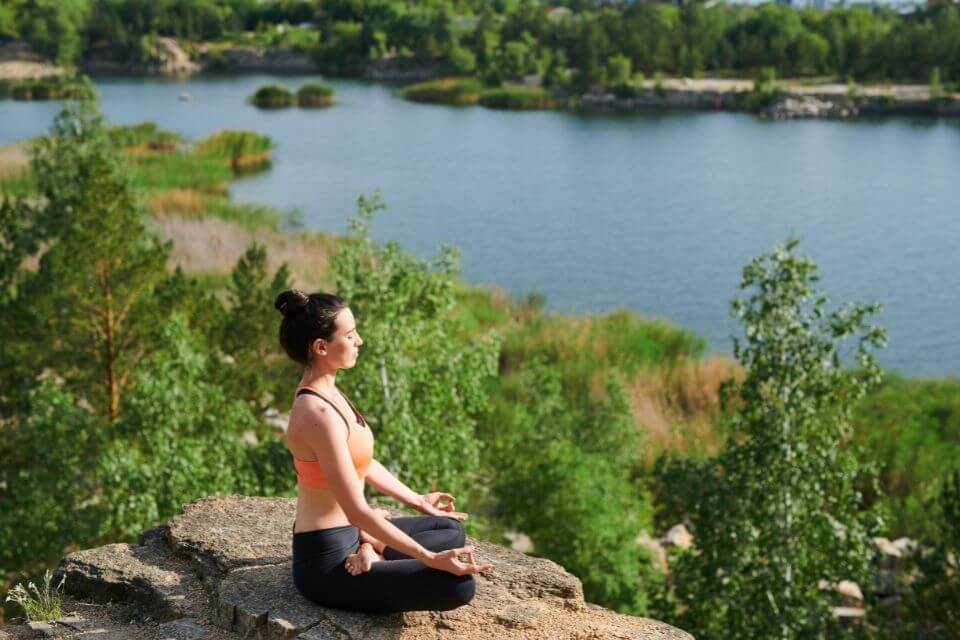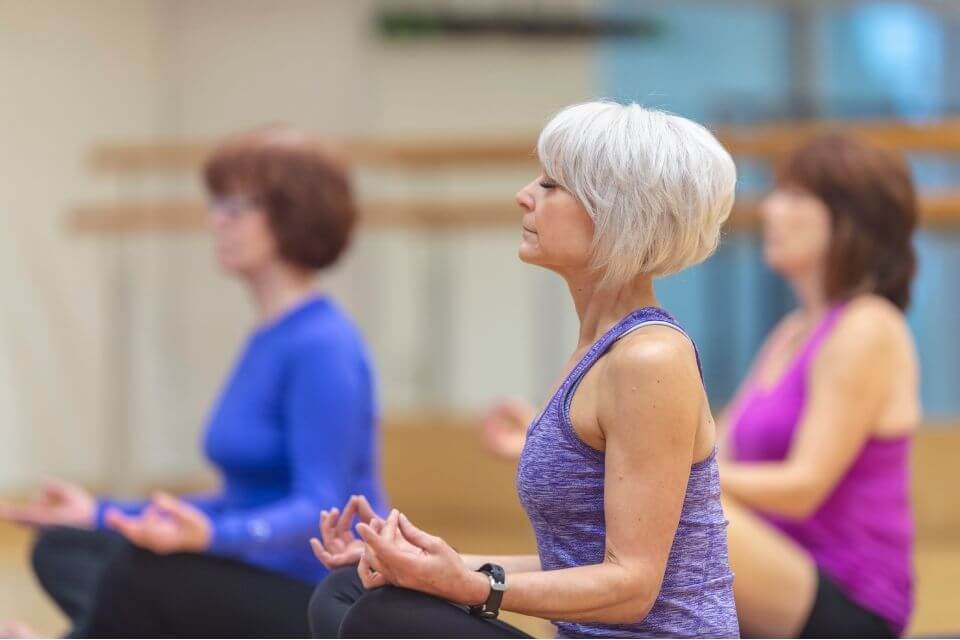Nowadays, a lot of individuals are suffering from anxiety. Usually, they deal with it on their own, and some individuals deal with it by having to consult a medical practitioner to get medical prescriptions and medications. In this article, we will be focusing on using the Ujjayi breath for anxiety. If you are suffering from anxiety, hopefully, this article will help you deal with it. It is normal to tell someone to take deep breaths when they are having an anxiety attack.

Hatha yoga is a type of Yoga that includes Ujjayi pranayama, or the yogic science of breathing. Ujjayi comes from the Sanskrit prefix “ud” and “Ji”: Ujji means to become victorious, so Ujjayi breath means “victorious breath”. This style of breathing is known for helping enhance and empower the yoga practice. When translated to English, Ujjayi means “to gain mastery or become victorious.” It is also referred to as oceanic breath as it sounds like the ocean waves on the shore.
Ujjayi breath helps us synchronize our breathing when doing Yoga, and this allows the yoga practice to become more in sync and rhythmic. A study has been done in Italy wherein subjects suffering from general anxiety and depression were introduced to a 2-week workshop about Sudarshan Kriya Yoga and were taught with poses, meditation, and breathing techniques such as Ujjayi breath. After 6 months, the anxiety scores of the subjects were reduced by 44%. This makes this technique effective in dealing with anxiety and stress.
Ujjayi breathing uses alternate nostril breathing and deep inhalations that make an individual feel calm. A study about it suggests that Ujjayi breath can help individuals deal with depression and anxiety.
What are the Benefits of Ujjayi Breathing?
Ujjayi breathing has different benefits, and here are some of them:
- Relieves tension and stress
- Calms the nerves
- Regulated blood pressure, advisable for individuals with hypertension to help lower their blood pressure
- Improves an individual’s self-awareness
- It helps increase the amount of oxygen in the bloodstream.
How to Perform Ujjayi Breathing?
- Begin the Ujjayi breath by sitting comfortably with the spine long and tall. Expand the head upward and the tailbone towards the ground. The ears must be over the shoulders, and the shoulders are over the hips. Doing this step will allow you to lengthen the body, creating space for the respiratory system such as lungs and diaphragm to expand and contract appropriately while breathing.
- Place the right hand in front of the mouth and nose while the palm is facing you. Place the left hand on the belly. Begin breathing through the nose and exhale through the mouth.
- Gently restrict the airflow through the windpipe so you can have resistance or slight constriction in the back of the throat. When you do this, the breath will have an audible sound, making sure to breathe deeply into the abdomen.
- When you breathe, inhale to contract the diaphragm, create space for the lungs to expand correctly, and exhale to relax the diaphragm and press the air out of the lungs. Let the abdomen rise and fall when doing each breath and you can see and feel the movement of the left hand placed in your abdomen.
- Once comfortable doing the breathing technique, close the mouth and rest both hands in the lap or knees. Inhale and exhale through the nose. Maintain the constriction in the back of the throat, and you can feel and hear the sound of the ocean waves or just like Darth Vader in the Star Wars movie.
- Inhale slowly using a slow count of three or four, depending on your personal preference. Then exhale accordingly to the slow count of the same number. If you can, try to elongate each breath and find a rhythm that you are comfortable with. Repeat the process for 5 minutes.
If you are having trouble getting the sound correctly, try opening your mouth and exhaling the sound “Haaah” – this sound is similar to when you are trying to fog up a mirror in front of you. Practice it accordingly so you can become comfortable with it. Then you can close your mouth and attempt the sound and feel the airflow through the nose. Once you have mastered this process, you can use the method for the inflow of the breath while constricting the throat’s back when inhaling.

When to Use Ujjayi Breath?
Ujjayi breaths can be beneficial to the following:
- When agitated, an individual can perform Ujjayi breath, and it is suitable for dealing with stress and relaxing the mind and the body. It can provide a soothing effect immediately and keep an individual calm.
- While practicing Hatha Yoga, an individual can use Ujjayi breathing while practicing Yoga to help you focus and be centered while performing the flows of one pose to another.
- When exercising, Ujjayi breathing is not only beneficial for Yoga. It is also helpful when performing exercises like running or cycling. It can help improve an athlete’s respiratory capacity and efficiency and reduce the wear and tear of the body.
- When experiencing stress and anxiety, Ujjayi breath has a slow and rhythmic pattern that can be quite helpful in calming and soothing the nerves. Always remember, if you are experiencing a panic attack or anxiety attack, try to do Ujjayi breathing so you can become calm, focused, and stress-free.
According to studies and research, Ujjayi breathing is effective in dealing with depression and anxiety. The Ujjayi breath will not only help an individual become calm and relaxed, but it will also help normalize breathing. Ujjayi breath is also referred to as “cobra breathing,” and it is a beneficial way for the yogi or individual so he can keep the vital life force circulating throughout the body. It is also similar to the breathing of a newborn baby.
Ujjayi sound is created by constricting the opening of the throat so there will be a resistance to the airflow. I am inhaling gently by pulling the breath and pushing the breath out against the resistance. When exhaling can create a soothing and well-modulated sound, it sounds like the rolling in and out of the ocean waves, try it out to find out.
Beginners can start by practicing this breathing pattern in a sitting position to get a feel for the sensation of the breath before incorporating them into an active yoga session.
In conclusion, ujjayi breath is an excellent way to manage anxiety in daily life. It is easy to do, can be done anywhere, and does not require any special equipment. Ujjayi breath can help to calm the mind and body, and can be used as part of a regular meditation practice. If you are struggling with anxiety, give ujjayi breath a try – you may be surprised at how helpful it can be.
